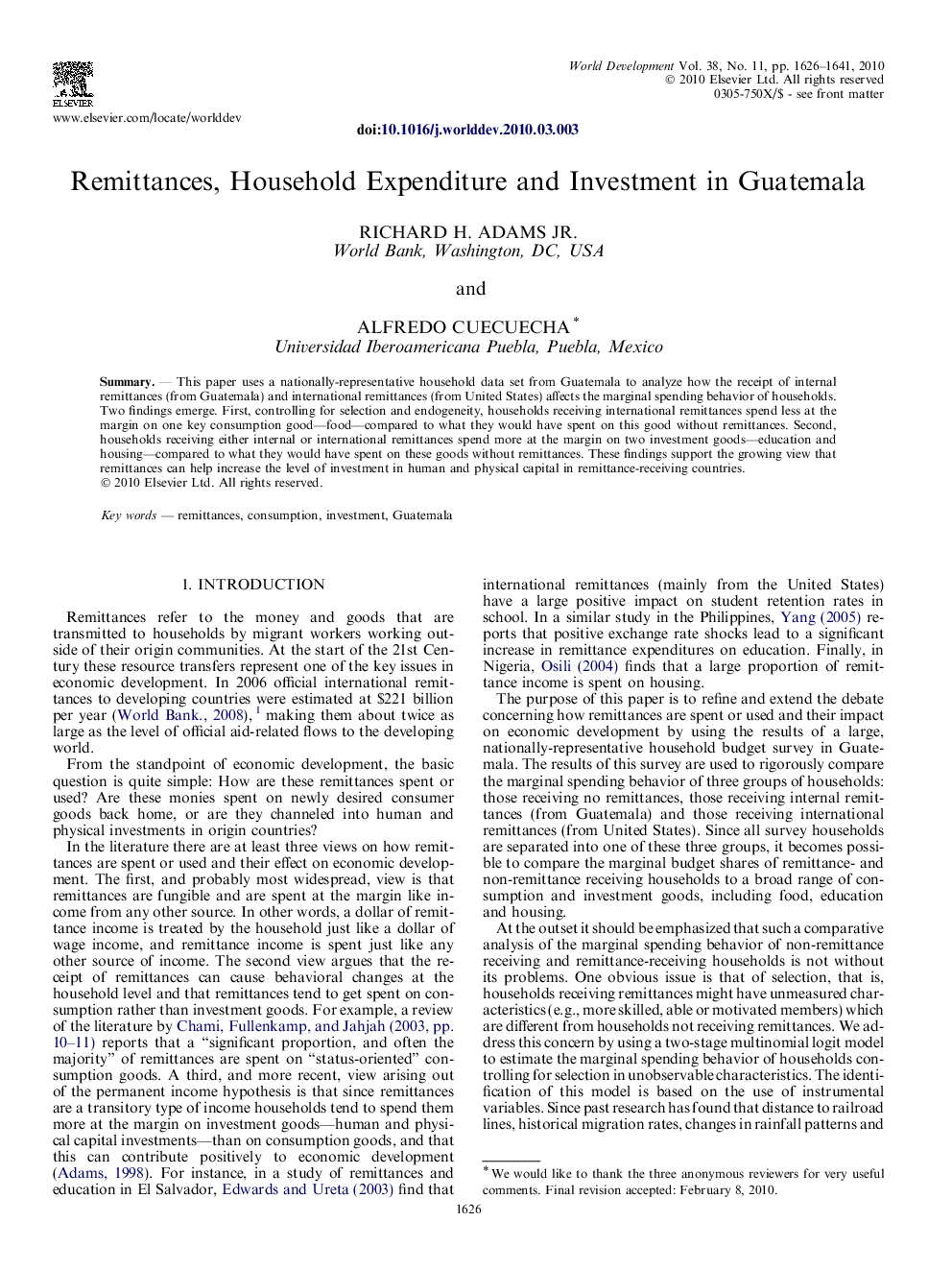| Article ID | Journal | Published Year | Pages | File Type |
|---|---|---|---|---|
| 992403 | World Development | 2010 | 16 Pages |
SummaryThis paper uses a nationally-representative household data set from Guatemala to analyze how the receipt of internal remittances (from Guatemala) and international remittances (from United States) affects the marginal spending behavior of households. Two findings emerge. First, controlling for selection and endogeneity, households receiving international remittances spend less at the margin on one key consumption good—food—compared to what they would have spent on this good without remittances. Second, households receiving either internal or international remittances spend more at the margin on two investment goods—education and housing—compared to what they would have spent on these goods without remittances. These findings support the growing view that remittances can help increase the level of investment in human and physical capital in remittance-receiving countries.
